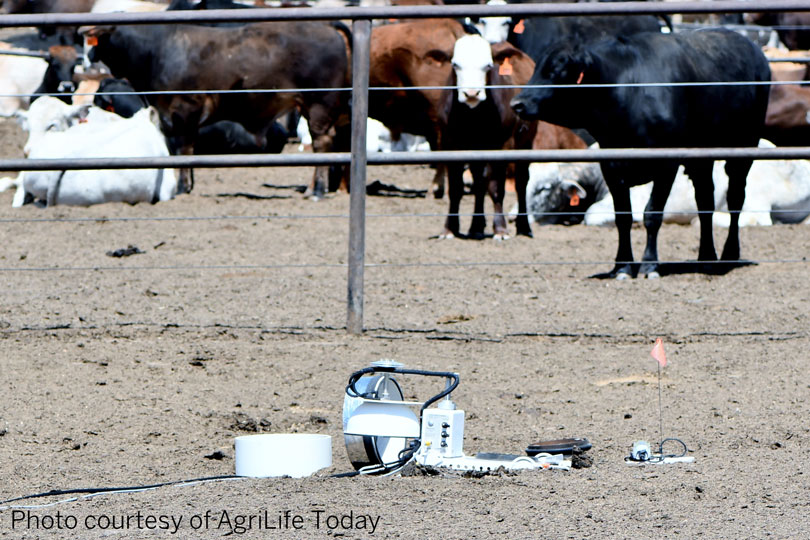By Justin Walker
Communications Specialist
A group of researchers spent a week in a Texas feedyard to better understand greenhouse gas emissions, according to AgriLife Today.
Dr. Ken Casey, an air quality engineer with Texas A&M AgriLife Research, and Drs. David Parker and Heidi Waldrip, livestock nutrient management researchers with the U.S. Department of Agriculture-Agricultural Research Service (USDA ARS), sat inside a recently-vacated feedyard in the Texas Panhandle to analyze nitrous oxide and methane emissions from the pen.
“We’re looking to understand better what controls nitrous oxide and methane coming off feedlot pen surfaces,” Casey said in an interview with AgriLife Today. “We want to improve the national emissions inventories as they pertain to greenhouse gases from feedyards in the Texas High Plains.”
Using six automated chambers, the researchers gathered more than 575 automated and 60 manual flux measurements to track nitrous oxide and methane gas emissions. Casey said the team was very interested in understanding what controls the release of the gases.
“If we are able to gain a better understanding of that, then we will potentially be able to provide advice to the industry about mitigation practices when it comes to pen management,” he said.
The testing found areas of the pen with shallower manure levels mostly emitted nitrous oxide. The opposite occurred in deeper levels of manure, where almost no nitrous oxide was emitted, but methane was emitted.
“We are trying to understand the interplay of those two gases, because the processes that are producing them are related,” Casey said.
The different factors that influenced the creation and release of these gases should be considered, Casey said. Temperature, moisture content and the amount of manure on the pen surface all play a role in the process.
“By understanding how those factors play together in the production of those gases, we can develop a greater understanding and potentially develop mitigation strategies,” he said.
Casey noted developing those strategies would be complicated, as one plan that reduces the emission of nitrous oxide could increase the emission of methane.
“Our understanding of these gases and the environmental factors that influence them are important,” he said.
Click here to read more about the research.

